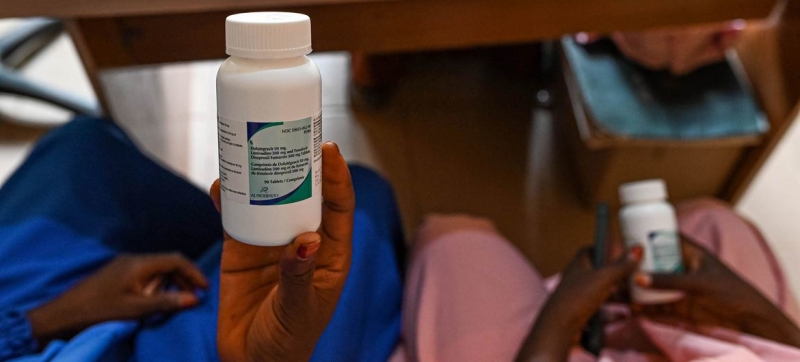
Some countries report stagnant or even increasing rates of antiretroviral therapy. UNAIDS report: HIV response faces biggest crisis in years Healthcare
The global response to HIV is facing its most serious crisis in decades. This is stated in a new report from the Joint United Nations Program on HIV/AIDS (UNAIDS). The document provides an analysis of the widespread consequences of the reduction in international funding. Low- and middle-income countries, where HIV is most prevalent, were hit first.
According to UNAIDS, today 40.8 million people are living with HIV. There were 1.3 million new cases in 2024, and 9.2 million people are still not receiving treatment.
A sharp cut in international aid in 2025 has exacerbated the HIV funding gap. The Organization for Economic Co-operation and Development (OECD) estimates that external aid to health systems will fall by 30 to 40 percent in 2025 compared with 2023, already causing significant disruption.
“The financial crisis has shown how fragile the gains we fought so hard for were,” said UNAIDS Executive Director Winnie Byanyima.
“Behind every number in this report there are living people: babies and children who were not examined and who were not diagnosed with HIV at an early stage; entire communities suddenly left without services and support. We can’t abandon them. We need to overcome this crisis,” she added.
Curtailment of HIV programs
Preventive services have suffered the most, UNAIDS emphasizes. In particular, there has been a major decline in access to HIV pre-exposure prophylaxis (PrEP) and a sharp decline in the number of voluntary medical male circumcisions.
The dismantling of prevention programs developed with young women has left them unable to access HIV prevention services, mental health support and gender-based violence support. In 2024, 570 new cases of HIV were recorded daily among girls 15–24 years old.
Community-based organizations key to the HIV response are reporting widespread closures, with more than 60 percent of women’s initiatives forced to suspend critical programs. Programs for men who have sex with men, sex workers, people who inject drugs and transgender people have also been significantly affected. could be 3.3 million more people than current projections.
Human Rights Situation
The financial crisis is unfolding against the backdrop of a deteriorating human rights record, which is particularly hard on marginalized groups.
In 2025, the number of countries criminalizing same-sex relationships and gender expression increased for the first time since 2008. Increasing pressure on civil society—especially organizations working with key groups in sub-Saharan Africa—is further limiting access to critical services.
Innovation and new funding opportunities
Despite significant challenges, a number of governments have taken swift action to reduce funding gaps. This has helped keep HIV treatment systems stable in many countries, with some countries reporting stagnant or even increasing rates of antiretroviral therapy.
Nigeria, Uganda, Côte d’Ivoire, South Africa and Tanzania have announced plans to increase domestic investment in HIV services. UNAIDS is working with more than 30 countries to catalyze national funding plans.
Innovation is playing an increasingly important role in the fight against HIV. New HIV prevention mechanisms—including injections given as little as twice a year—could prevent tens of thousands of new cases in high-prevalence regions.
In 2025, the Bill & Melinda Gates Foundation, UNITAID, the Global Fund to Fight AIDS, and the US President’s Emergency Plan for AIDS Relief (PEPFAR) announced work to ensure widespread access to affordable versions of critical drugs—in some cases costing as little as $40 per person per year.
Plans for the Future
Events in the second half of 2025 offer hope for continued international funding. The United States has unveiled a new strategy and begun entering into bilateral agreements with approximately 70 countries to support funding as they gradually transition to self-reliant national systems over the next five years.
Ahead of World AIDS Day on December 1, UNAIDS is calling on world leaders to maintain international funding in this area and invest in innovation, including affordable, long-term prevention and treatment.
“Our choices now determine the future,” Byanyima emphasized.
“We can… unite around a common goal – to end the AIDS epidemic. Millions of lives depend on the decisions we make today,” she added.
